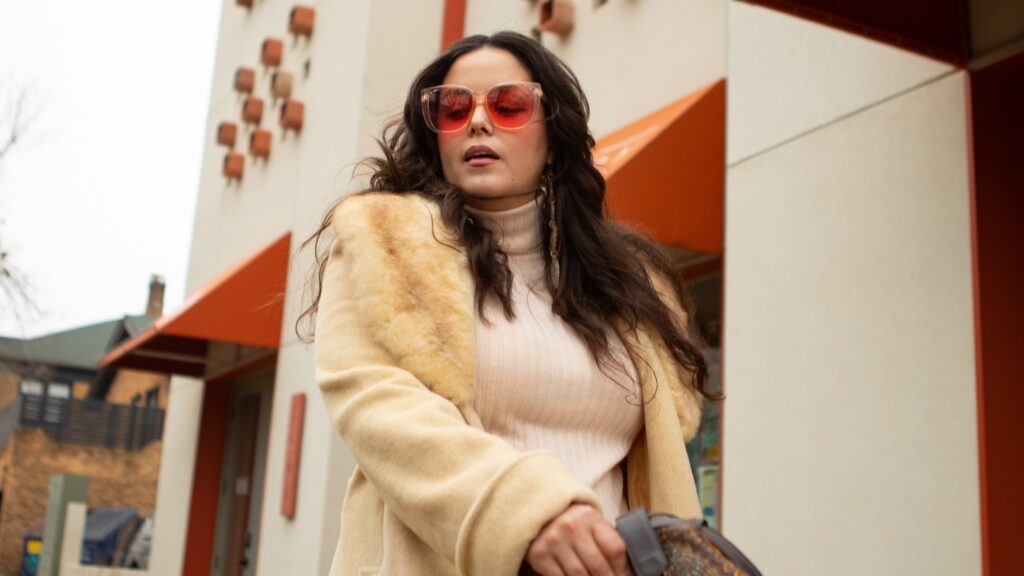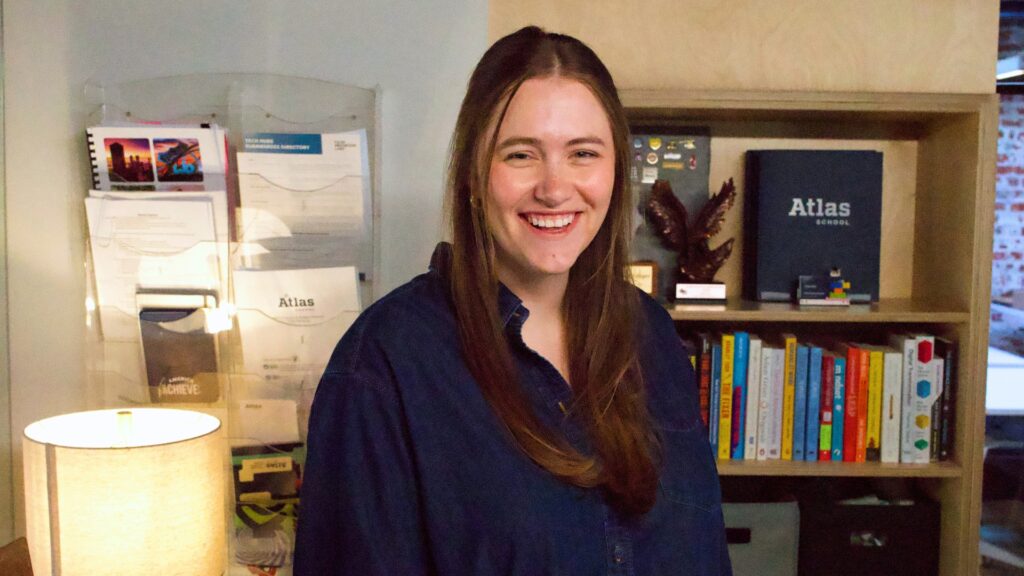Tesia Zientek is an indigenous education advocate, community volunteer, and vintage fashion hunter who lives in Oklahoma City, Oklahoma. Raised in Shawnee, Tesia graduated from the University of Notre Dame before returning home to create the Citizen Potawatomi Nation’s education department. Along with various boards, she now serves as Senior Director of Programs for the American Indian Science and Engineering Society (AISES). Tesia filled us in on why life in Oklahoma is anything but plain.
Thanks for taking the time, Tesia. Let’s start with a little taste of your life in Oklahoma.
I grew up in Shawnee, Oklahoma, right next to the headquarters for my tribe, the Citizen Potawatomi Nation. Since, I’ve migrated down I-40 to Oklahoma City, where I work remotely as Senior Director of Programs for the American Indian Science and Engineering Society (AISES), a national nonprofit dedicated to advancing indigenous people in science, technology, engineering, and math (STEM).
When I’m not working, I volunteer on several boards, including the National Indian Education Association, the Oklahoma Council for Indian Education, and The Kwek Society. I’m also a fiend for secondhand clothing, so I make the most of local estate sales and thrift shops.
The cost of living is so affordable in Oklahoma that I’m able to live in Oklahoma City’s Midtown, which is walkable to some of my favorite shops and restaurants. I lived very briefly in New York City, and for less than half of what I pay now, I rented a teensy room with no windows and no closet. Now, I get to enjoy the best of Oklahoma while also saving money to travel and visit my friends all over the world.
You’ve been very successful in your career. You could go anywhere. Why Oklahoma?
Simply put, my community is in Oklahoma. Not only do I get to stay connected to my tribal community (and easily visit 38 other tribal nations), but I get to live in the middle of a tight-knit, vibrant city with people who care deeply about building something we can be proud of.
I’ve lived in Indiana, California, and Puerto Rico. Oklahoma truly has some of the nicest folks I’ve ever had the pleasure to meet. Everyone who has ever visited me in Oklahoma has felt right at home.
You’re very involved in your community. Tell us a little about that.
I spend a lot of time working with local advocacy groups in Oklahoma. While I might not always agree with Oklahoma politics, we do have some of the hardest-working people fighting to make change for some of our most vulnerable populations. In particular, I love to serve as president of the Oklahoma Council for Indian Education board and the ACLU of Oklahoma as a board member. I’m also proud to be an alumna of Matriarch Oklahoma, a grassroots organization that provides community-building and learning opportunities for indigenous women, non-binary, and Two Spirit folks.
Oklahoma is home to 39 tribal nations. If an Oklahoma newcomer asked what that’s like, what would you tell them?
Tribal nations in Oklahoma offer just about every industry you can imagine — from education to policy to gaming to economic development. Beyond offering unique, beautiful cultures, tribes are huge economic engines to our state and often employ more local non-Natives than tribal citizens. Because so many tribes are located in remote areas, rural Oklahomans are able to work in exciting positions without having to commute or move. Best of all, it’s usually easy to see exactly how your work impacts tribal citizens and local communities in a way that corporate America usually can’t replicate.
What is it like being a remote worker in Oklahoma?
One of my favorite things about working from home in Oklahoma is being able to take a break to enjoy an audiobook or podcast while taking a walk through the city mid-day. When the weather is nice, I’ll walk a route through downtown to Myriad Botanical Gardens and over to the city’s newest greenspace, Scissortail Park. I love people-watching and tracking the changing of the seasons through the beautiful trees and flowers. Oklahoma is also so easy to get around, and traffic is practically non-existent, so I can run errands super easily.
In my job, I’m also able to help tribal students working from home and then still be involved in my culture and ceremony. AISES has close to a dozen folks living in Oklahoma. With so many tribes now located in our state, Oklahoma really is the heart of Indian Country in a lot of ways. It’s also easy to take the interstate to Shawnee and spend time with my family, who still lives on our tribal allotment land.
What does a typical weekend look like for you?
On a Saturday, my boyfriend Jean Carlo and I can be found getting the best croissants in town at the Harvey Bakery & Kitchen. Our next stop would be caffeine: Quoc Bao Bakery for the best Vietnamese coffee in town, StellaNova for amazing chai lattes, or Urban Teahouse for special local tea blends. We’ll then hit up an estate sale, vintage market, or thrift store to try to find a unique deal.
We love to try new restaurants, but a few we can’t keep away from are Tamashii Ramen (The! Garlic! Fried! Rice!) and Ma Der Lao Kitchen — you can’t tell me that the grilled beef and crispy rice salad won’t change your life. If the weather’s nice, we’ll end the day running or walking by the Oklahoma River.
You’re big into thrifting. Tell us a bit about Oklahoma’s secondhand scene.
Oklahoma has some of the best secondhand fashion! Other places I’ve visited have so many resellers that it’s difficult to thrift, and their vintage shops tack on insane markups.
In Oklahoma, I can find affordable shops and fantastic estate sales almost every weekend. My favorite thrift store of all time is Shawnee Outreach. I also have great luck finding vintage at Goodwill — the ones in Midwest City are top-tier. Orange Peel, which features some of my favorite resellers like Cult 70 Threads, offers a curated vintage experience. Finally, Jessi Chapman and Ãnna Frost own Library, a size-inclusive, super stylish shop in Oklahoma City’s Paseo Art District that lets you rent clothing for any occasion with an affordable monthly subscription.
What are some hidden Oklahoma gems people need to check out?
If you haven’t been to Groovy’s, you haven’t truly lived. They play plenty of disco throwbacks in this club, and the best part? When the right song comes on and everyone is feeling it, confetti rains down from the ceiling.
Also the Milk Bottle building on Classen in Oklahoma City. It’s an Oklahoma institution. Inside, you’ll find the best nail tech in town, Zitta John, who owns Milk, a beautiful nail salon that specializes in unique nail art. Lastly, the Citizen Potawatomi Nation Eagle Aviary in Shawnee. It’s home to over a dozen non-flighted golden and bald eagles.
Alright, last question. What do you think people get wrong about Oklahoma?
I think people think of Oklahomans as uncultured hicks. However, the Oklahoma I know is full of vibrant tribal culture, passionate advocates, and a scrappy can-do attitude to make the best of what we have. And it turns out, what we have is pretty damn great.



